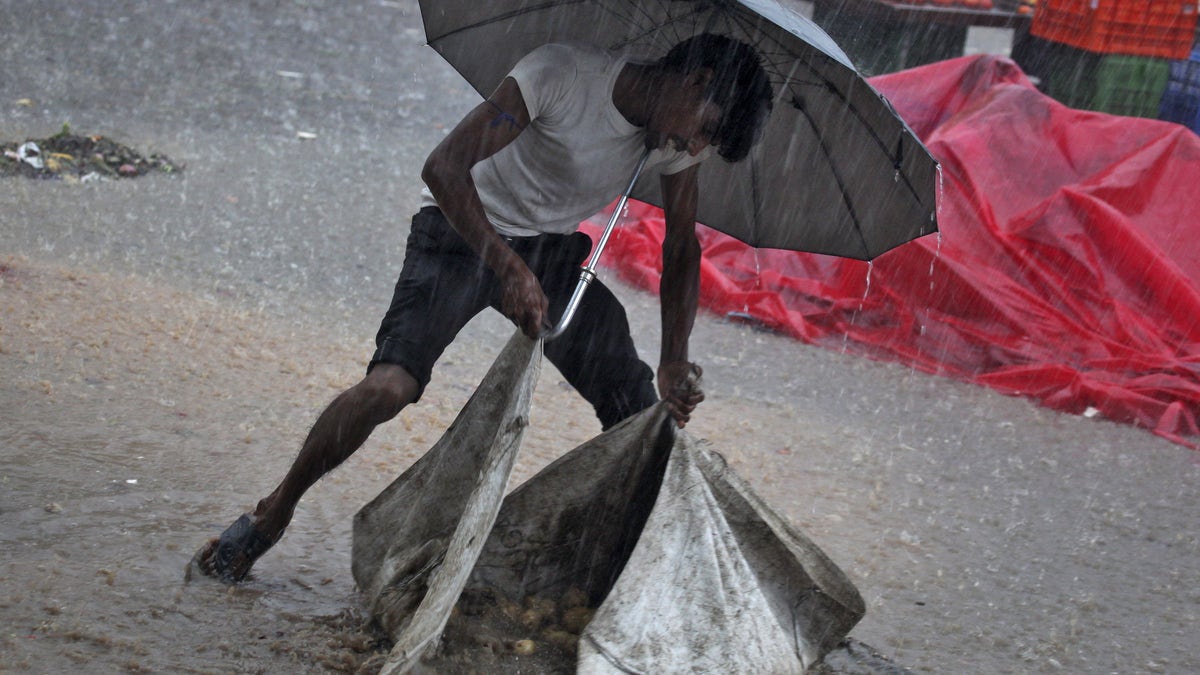
A vendor uses an umbrella as he tries to gather potatoes during a heavy rain shower at a wholesale vegetable market in Chandigarh, India, August 11, 2015. (REUTERS/Ajay Verma)
Summer monsoons are the lifeblood of Indian agriculture. Beginning with the initial burst in May or June and culminating in steady rainfall through September, monsoons supply a vital resource to reservoirs and much of the peninsula's farmlands. Without this rain, the country would struggle to provide for it's 1.3 billion people, who are one of the world's top consumers and producers of crops like wheat and rice. Predicting monsoons helps farmers determine when and how to work their land.
For nearly a century, India has turned to an old statistical method to forecast and prepare for these seasonal downpours. This method is better than nothing but hardly perfect -- offering only an overall, country-wide forecast and forecasts for five regions. For a country as large as India, these scattered predictions aren't exactly descriptive.
Related: Bots are about to take over the world … but they just want to tell you the weather
In an effort to work better with the weather, India will abandon the statistical method and instead adopt a $60 million supercomputer with 3D modeling to help predict next year's monsoons, reports Reuters.
The dynamic, 3D modeling technique is far more high-tech than the statistical method, which sees Indian meteorologists collect data on things like sea-surface temperatures, wind direction, and wind speed before comparing this information to historical records of rainfall.
The task is tedious but tends to be reliable. Last year, despite forecasts of rainfall by India's only private forecaster, the India Meteoritical Department (IMD) correctly predicted a drought for the second year in a row using the statistical method. Still, the method's faults were made apparent when the IMD failed to forecast 2009's record-breaking drought.
On the other hand, the 3D modeling technique is quick and reliable, but demands immense computing power. Meteorologist M. Rajeevan, who heads the country's weather office, told Reuters that the new supercomputer will work ten times faster than the one used in recent years. With this speed and efficiency, India hopes to better predict the weather patterns that provide its farmers with most of their rainfall while helping those in rural regions prepare for drought.
